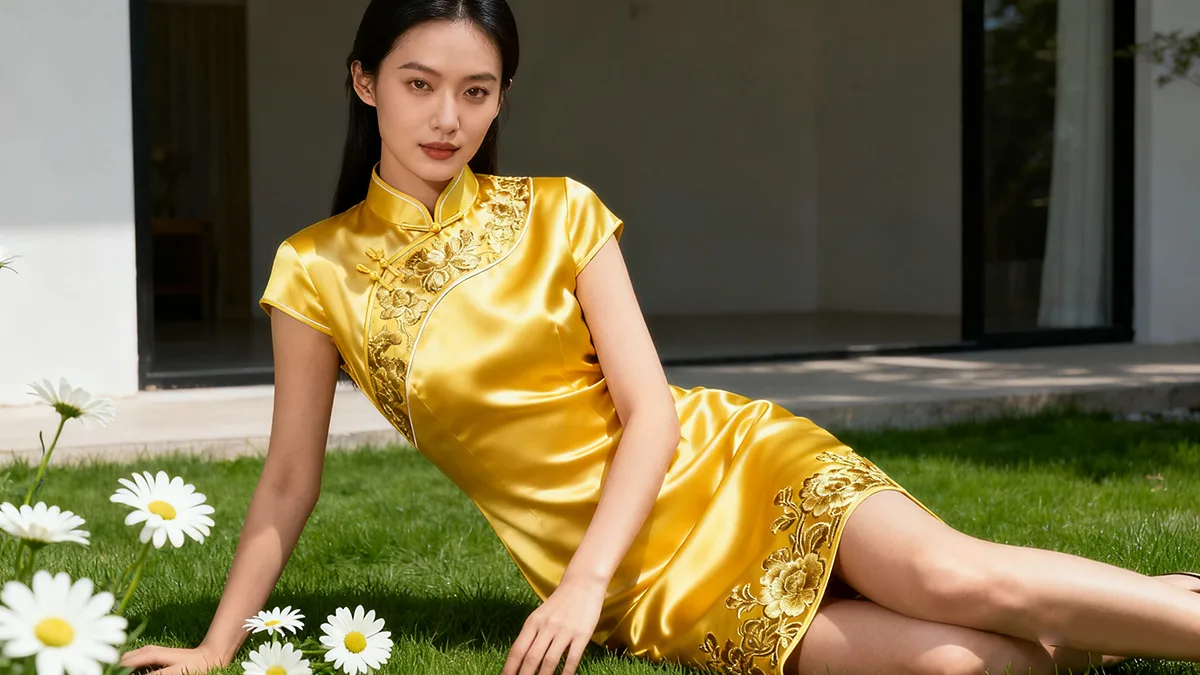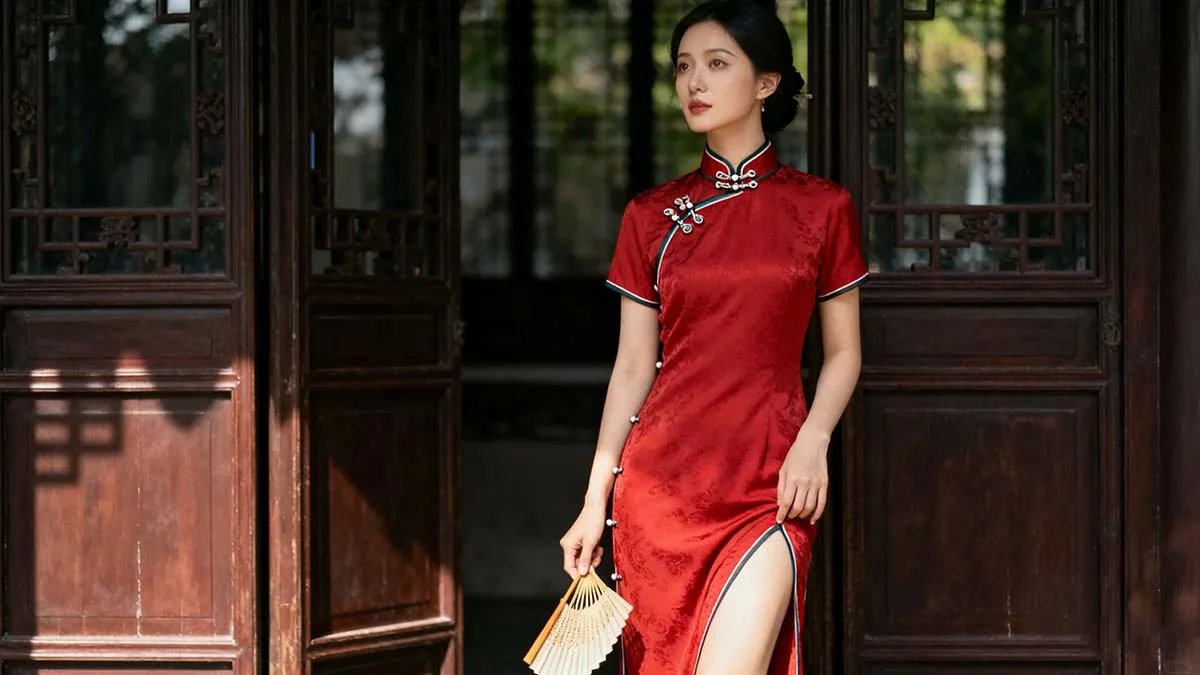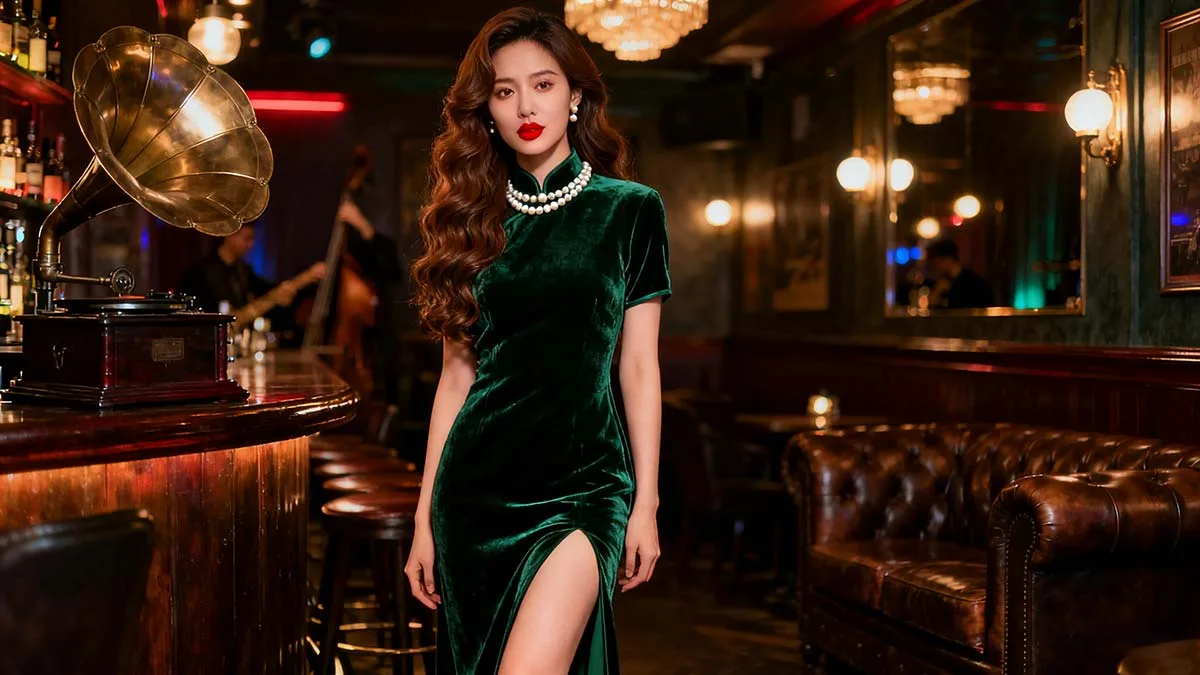Modern Cheongsam
Since its inception, the qipao has remained a shining jewel of Chinese clothing culture. After years of evolution and innovation, the modern qipao — infused with contemporary design and fashion elements — has emerged. This article deconstructs the modern qipao’s fashion attributes and explores how its stylistic expression reflects today’s aesthetics. It further examines the modern qipao through its styles, fabrics, structure and craftsmanship, decorative details, and underlying cultural and philosophical concepts.
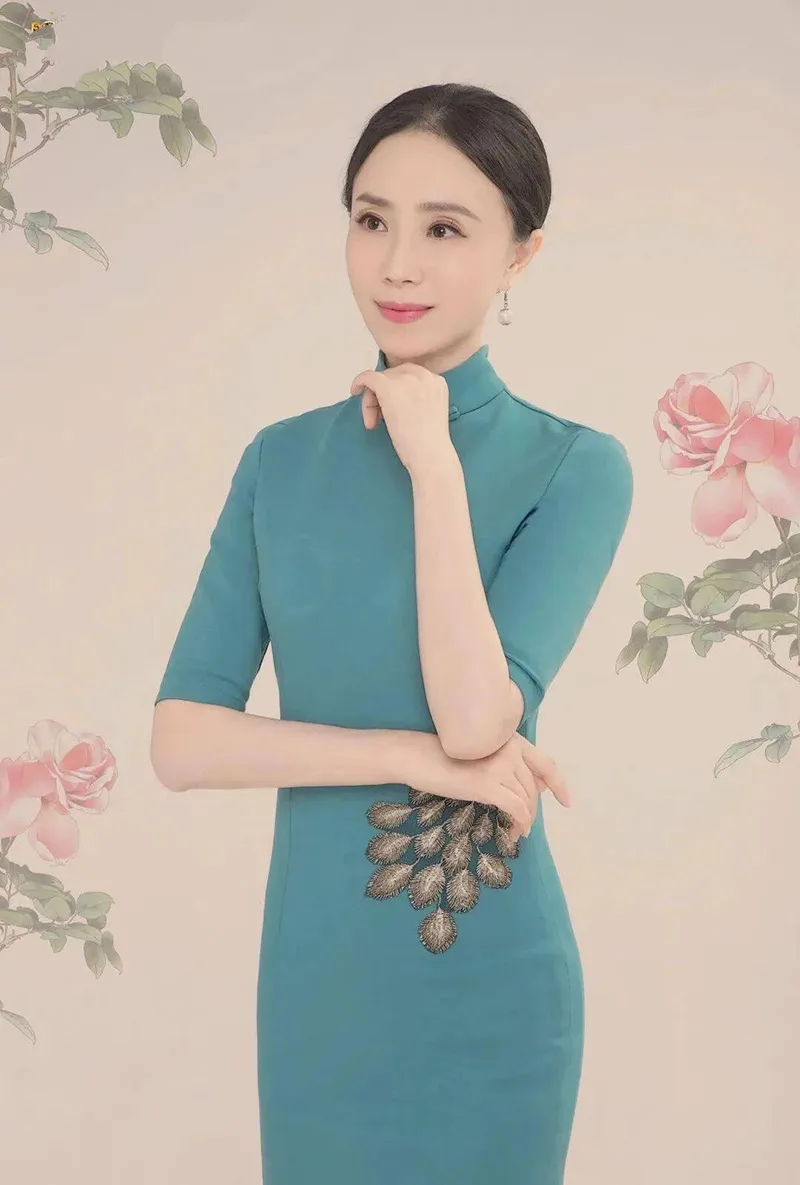
1. The Origin of the Modern Cheongsam
The development of the qipao has evolved from the early Beijing-style qipao to the Shanghai-style qipao of the 1920s and 1930s, and eventually to today’s modern version. The mid-20th century, particularly before and around the 1950s, marked the turning point between the traditional and modern cheongsam. Under the inheritance of traditional Chinese cultural essence, the qipao began to absorb Western methods of garment construction and aesthetic concepts. Through this fusion, the modern cheongsam gradually emerged — one that not only values visual form and beauty but also emphasizes the natural structure of the human body and a people-centered philosophy of clothing design.
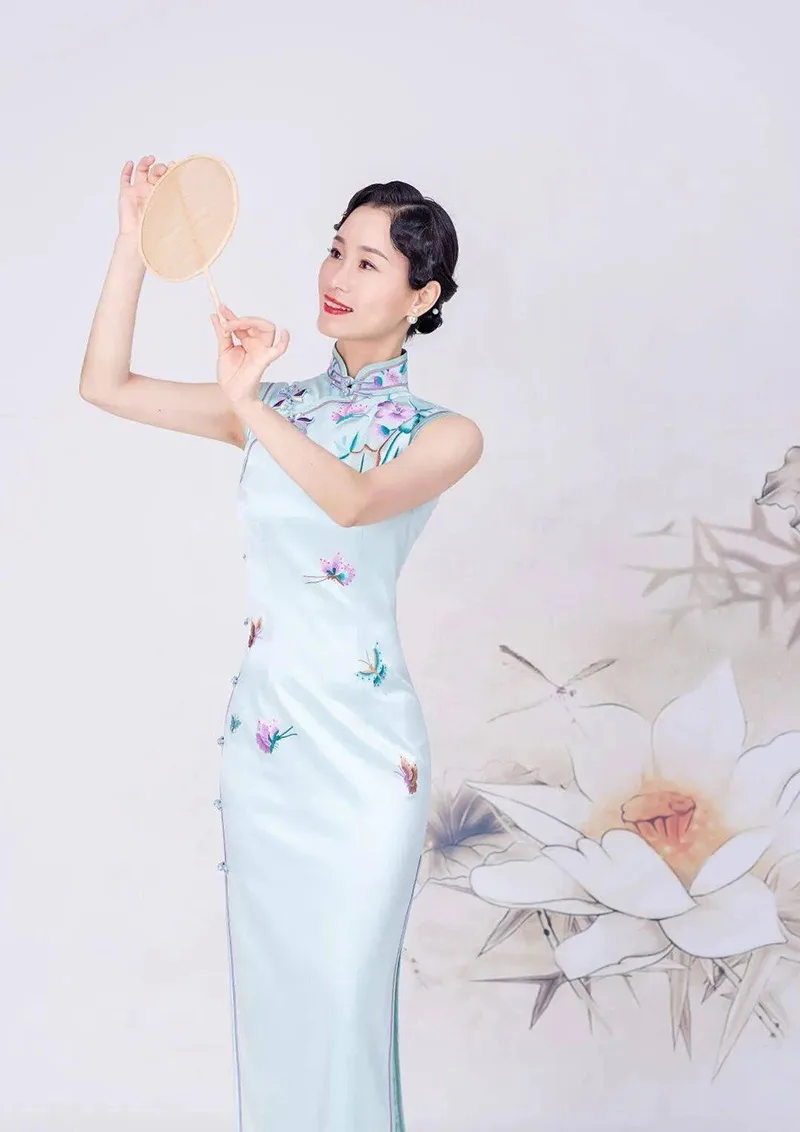
2. The Necessity of Fashion in Modern
Cheongsam Design
(1) The Concept of Fashion
From a cultural perspective, fashion represents a form of modernity, expressed through people’s lifestyles and habits. Whether a region is considered fashionable depends on its level of social openness and economic development. This manifests in two ways: first, in the implicit, internal dimensions such as attitudes toward life, values, and consciousness; second, in the visible, external aspects of lifestyle, including clothing, cuisine, and home decor. Fashion, which embodies the ideas of “being ahead of the times” and “valuing long-standing admiration,” refers to things and practices that people are encouraged to embrace or emulate.
(2) Market Demand
Rapid social development and significantly improved living standards provide favorable conditions for people who increasingly value personal appearance and style. Open-minded thinking and broad perspectives determine both the height and evolution of fashion. For businesses and markets to maximize profit, clothing must keep pace with current fashion trends and stay at the forefront of style. Internationally renowned brands such as Dior, Chanel, and Saint Laurent serve as the best examples of this principle.
(3) Fashion Leads Trends
The origin of trends can often be traced to experts in professional design fields. These specialists study and observe various phenomena, synthesize their insights, and showcase them through multiple media channels. Over time, this process generates a highly influential force in shaping public taste. Since fashion plays a leading role in setting trends, the fashionability of modern cheongsam holds a critically important position in design and cultural relevance.
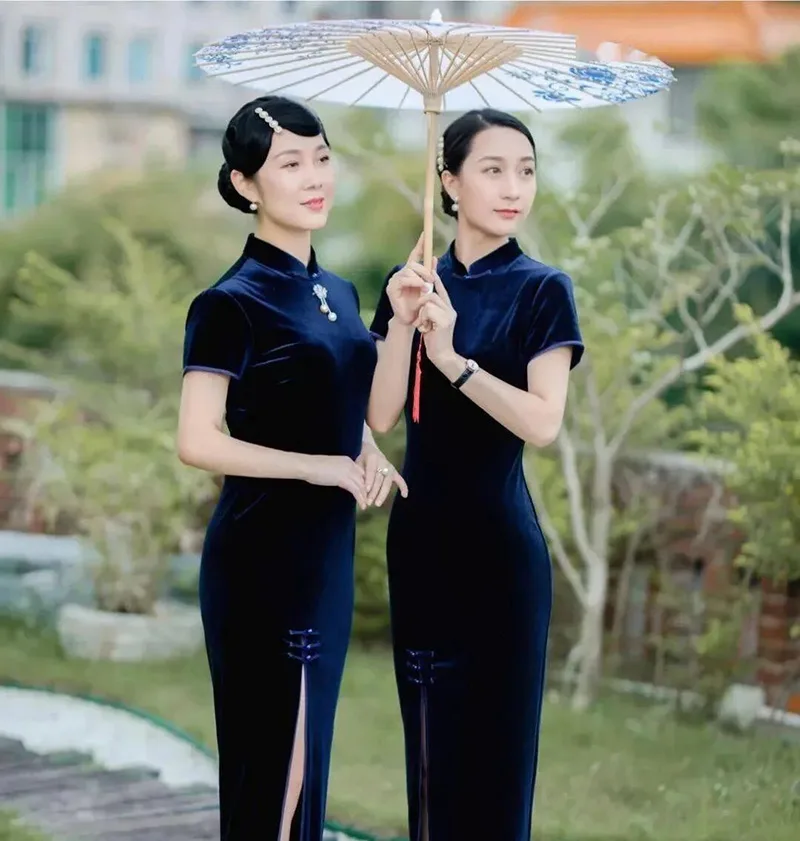
3. Expressions of Fashion in Modern
Cheongsam Design
(1) Style and Design of the Modern Cheongsam
Intelligent, graceful, and elegant qipao designs have long been favored by women. However, as fashion trends continue to evolve rapidly across all types of clothing, the modern cheongsam must break away from the conventional, traditional forms in order to gain a competitive edge. In terms of style, it aims to stay at the forefront of fashion and lead contemporary trends.
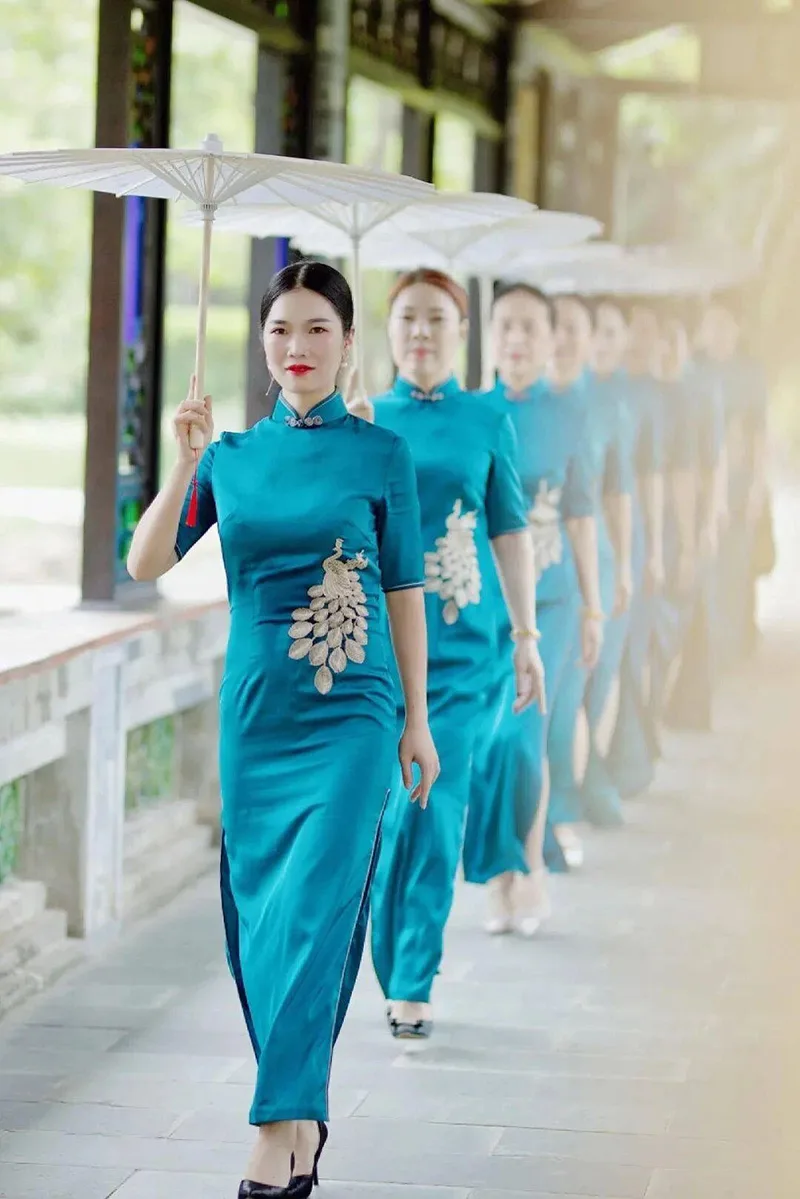
1.Partial Design
Unlike the traditional Chinese stand-up collar, modern cheongsam feature a variety of collar styles, including notched collars, flat collars, pleated collars, and asymmetrical collars. Whether considering the overall shape of the collar or specific details, these design approaches bring a refreshing and innovative visual appeal. For instance, at the 2015 Northeast Tiger brand fashion show, a designer applied structural segmentation to create a novel three-piece collar, with dividing lines extending from the chest down to the hem, adding a rhythmic sense of linear beauty to the qipao.
In addition, sleeve designs have also undergone significant innovation. Based on techniques such as addition, subtraction, deconstruction, and reconstruction, new sleeve styles have emerged, including raglan sleeves, sleeveless designs, ruffled sleeves, horse-hoof sleeves, and “ham” sleeves, reflecting a creative evolution in modern cheongsam aesthetics.
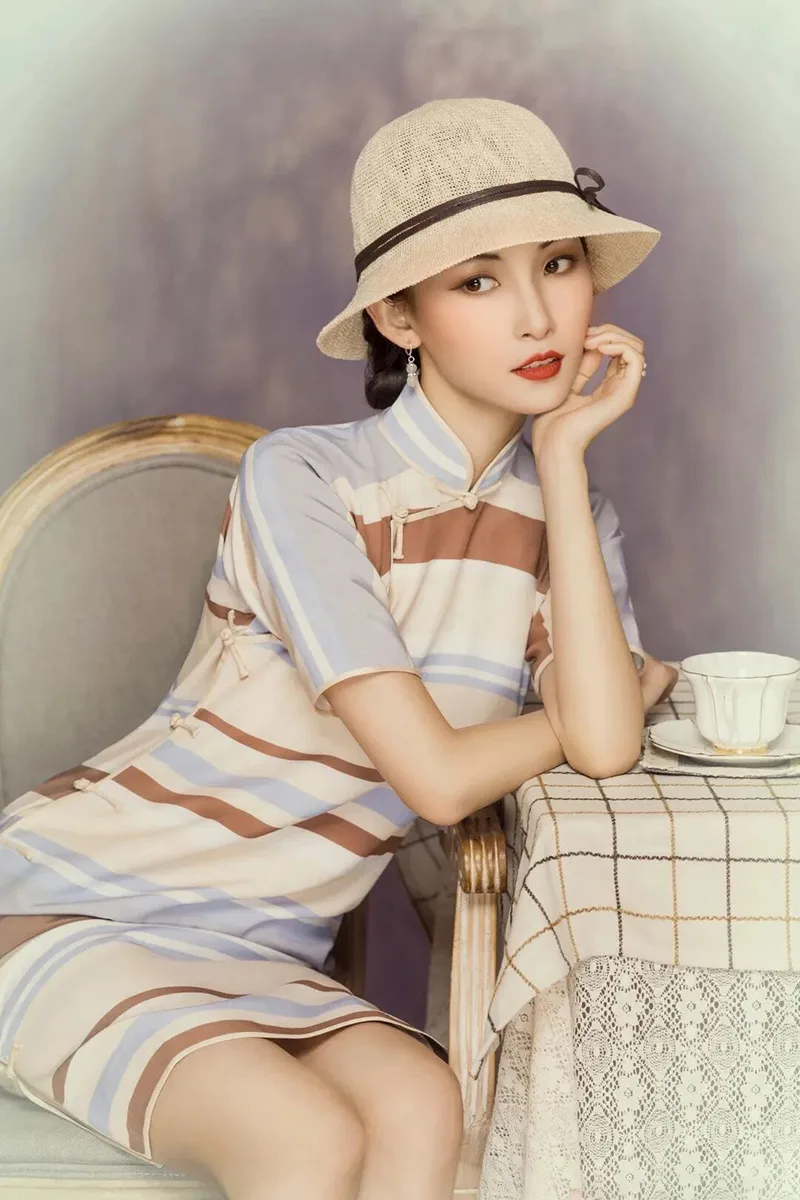
Modern cheongsam also incorporate trendy shoulder designs, such as exposed and asymmetrical styles. For example, a black off-shoulder qipao gown displayed at the Nanjing Museum showcases a design in which the creator skillfully integrates figurative elements and asymmetrical forms inspired by the upward-curving eaves of traditional Chinese architecture into the shoulder area. Such imaginative design gives the garment a distinctive and unique character.
Breaking away from the traditional diagonal closure, modern cheongsam have also introduced innovations in the collar, placket curvature, and edge decorations. This has led to the emergence of frontless collars, collarless styles, asymmetrical collars, plackets made from contrasting fabrics, and elaborately decorated collar edges. In Haute Couture, the Spring/Summer 2007 collection by Jean-Paul Gaultier combined the traditional Chinese front-cross closure with Western gown aesthetics, giving rise to uniquely crafted, gender-neutral modern qipao gowns. Similarly, at the 2017 Spring/Summer China International Fashion Week, several modern cheongsam designs by Xiang Dai Gong · Gong Hangyu featured collarless designs.
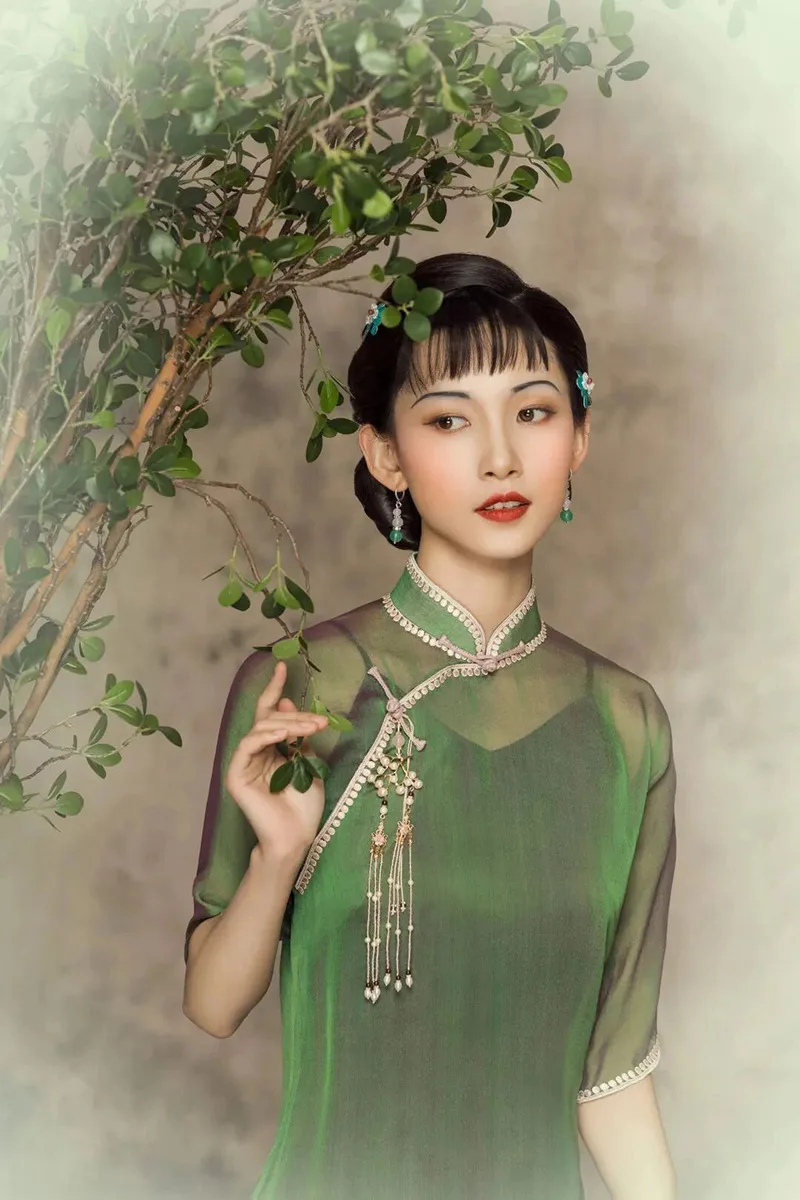
The design of the back and hem of modern cheongsam has become increasingly innovative, featuring elements such as cutouts, asymmetrical shapes, and nude-toned backs. By incorporating avant-garde techniques like spatial displacement and folding, designers have made the hemline better reflect contemporary fashion aesthetics and individuality. The fishtail hem is a particularly successful example of this approach. Meanwhile, slits can be positioned and decorated in various ways depending on the style of the qipao.
2. Silhouette Design
Building on the traditional A-, H-, and X-line silhouettes, modern cheongsam have further evolved to include O-, T-, V-, and even irregular shapes that align with contemporary fashion trends. Designers coordinate the overall structure using both two-dimensional planes and three-dimensional spatial relationships, employing creative techniques such as association, exaggeration, transformation, and displacement to shape the overall silhouette.
This innovative approach allows modern cheongsam to maintain elegance and grace while also incorporating contemporary elements of sensuality, fashion-forward style, and comfort.
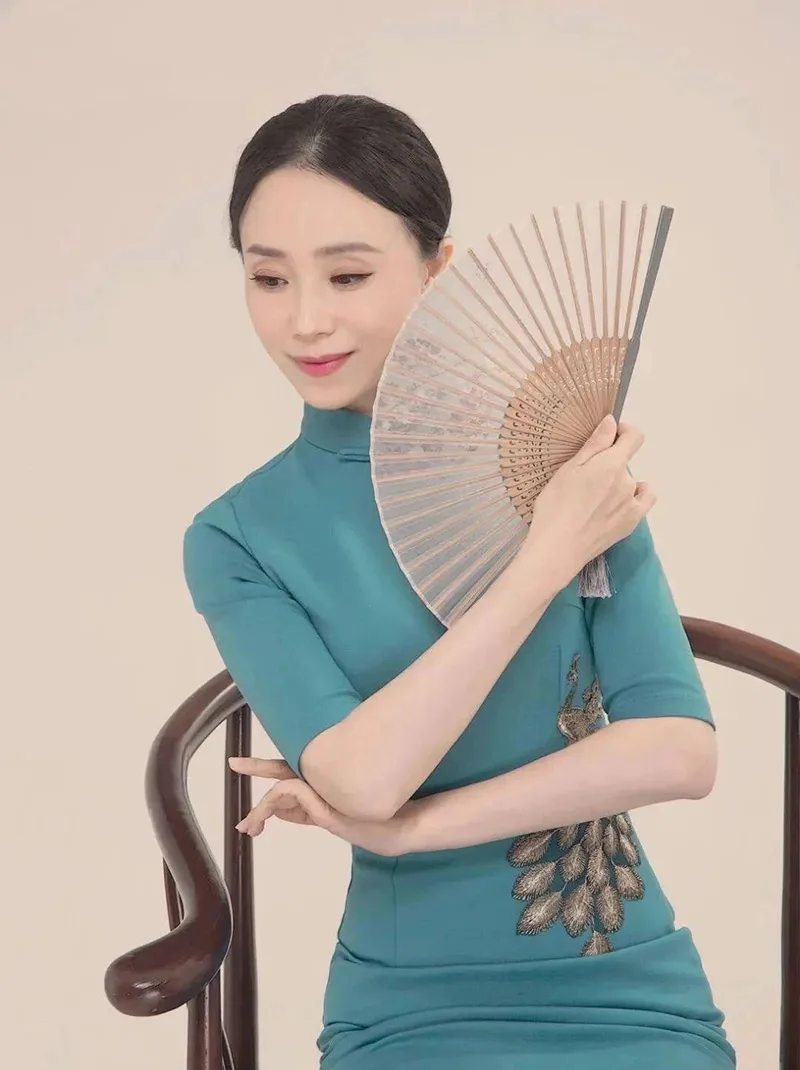
(2) Fabric Selection of Modern Cheongsam
Departing from the traditional preference for silk and satin with good drape, modern cheongsam increasingly use fabrics that are both comfortable and fashion-forward. Advances in technology have introduced a wide variety of materials with different colors, textures, structures, and styles, providing designers with greater flexibility in fabric selection. Techniques such as color-blocking, geometric and abstract patterns, hand-painting, and tie-dye have enhanced the unique charm of modern cheongsam. At the 2017 Spring/Summer Xiang Dai Gong · Gong Hangyu modern qipao fashion show, these fabric techniques — including patchwork, hand-painting, and tie-dye — were perfectly showcased, exemplifying the creativity and innovation in contemporary qipao design.
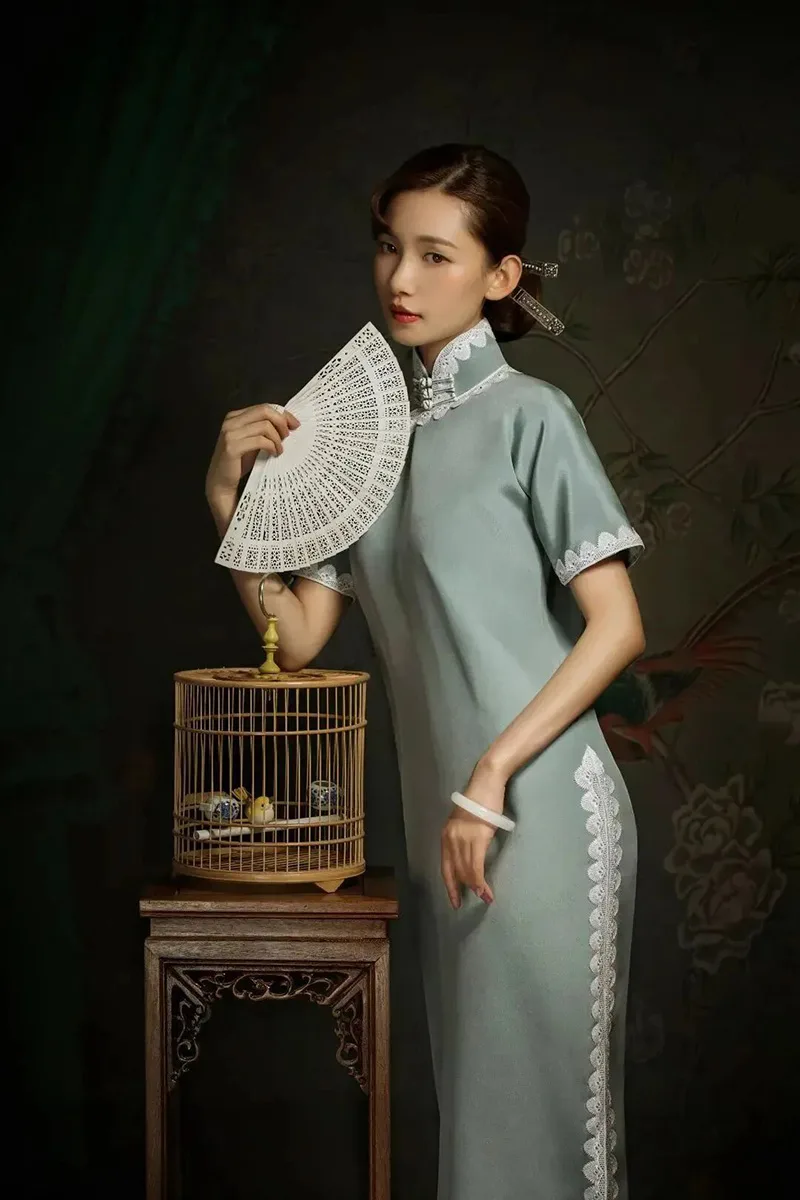
(3) Structural and Craftsmanship Design of Modern Cheongsam
Traditional qipao, with their tight-fitting design, often restricted movement and offered limited comfort. In modern society, where people face significant pressures in daily life and work, the structure and craftsmanship of the qipao have been greatly improved. Taking into account the anatomical characteristics of the Eastern body and the shape features of the qipao, modern designs allow for more ease in the bust, waist, and hips. Based on three-dimensional tailoring, designers carefully analyze the size, shape, and proportional distribution of bust darts and front and back waist darts, as well as their uniqueness in modern cheongsam, to enhance both fit and comfort.
Additionally, modern cheongsam are designed and adjusted according to the natural curves of the body and the shape of the side seam lines, establishing consistent principles for the construction of side seams in contemporary designs.
Furthermore, appropriate cutting methods and craftsmanship techniques are applied based on the fabric and pattern of the qipao. For example, during cutting, extra seam allowance and edge binding are added along the contour lines, while during assembly, garment pieces are carefully aligned with side seams and collar edges reinforced with stay-stitching, ensuring precision and durability in the finished garment.
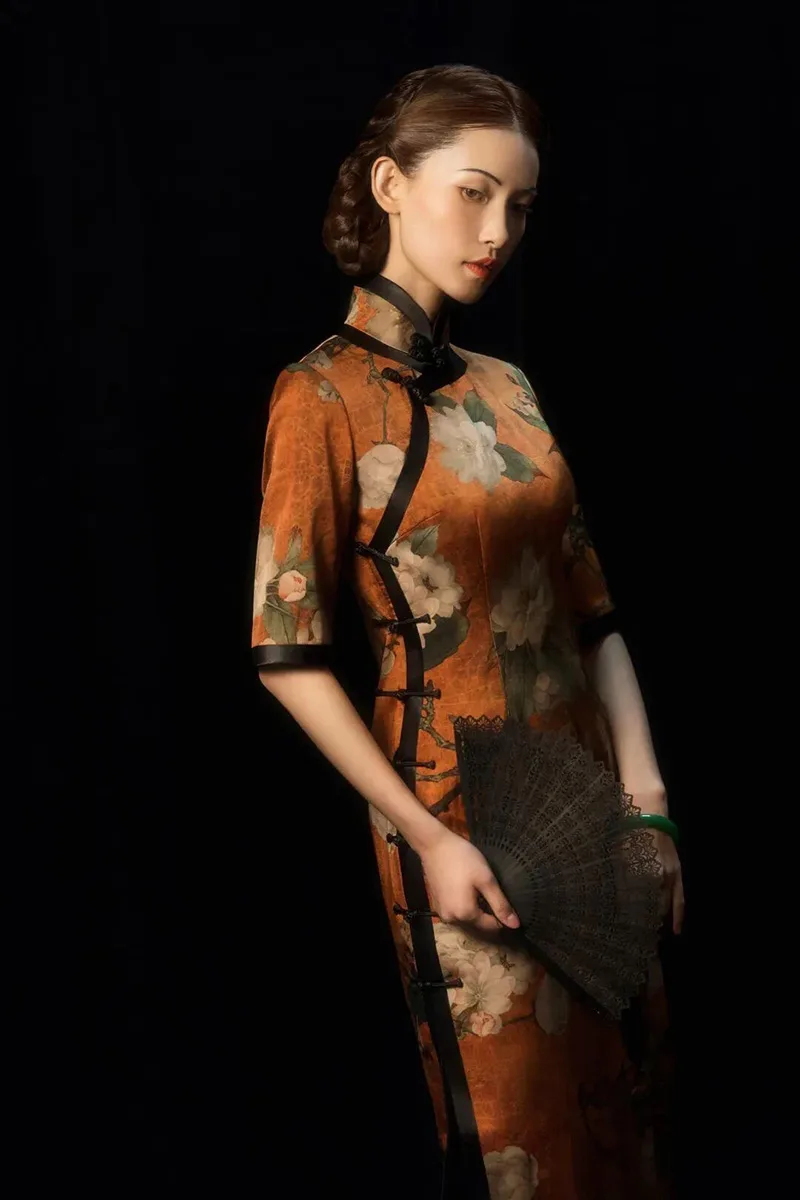
(4) Decorative Design of Modern Cheongsam
Modern cheongsam incorporate not only traditional decorations such as jade bracelets and handcrafted frog buttons, but also a range of contemporary fashion accessories, including sunglasses, brooches, watches, metal clasps, and invisible zippers.
The patterns used in modern cheongsam are equally diverse, featuring portraits, cartoons, roses, cranes, and more. For example, in 1989, a qipao produced by the Suzhou Embroidery Factory won the Gold Award at the first Beijing International Expo. A proud peacock was intricately embroidered on the front of the dress, with its head positioned at the chest and its body and colorful tail feathers extending to the hem. The richly layered feathers and the vibrant yet tasteful colors gave the peacock a high level of artistic appeal, earning widespread admiration.
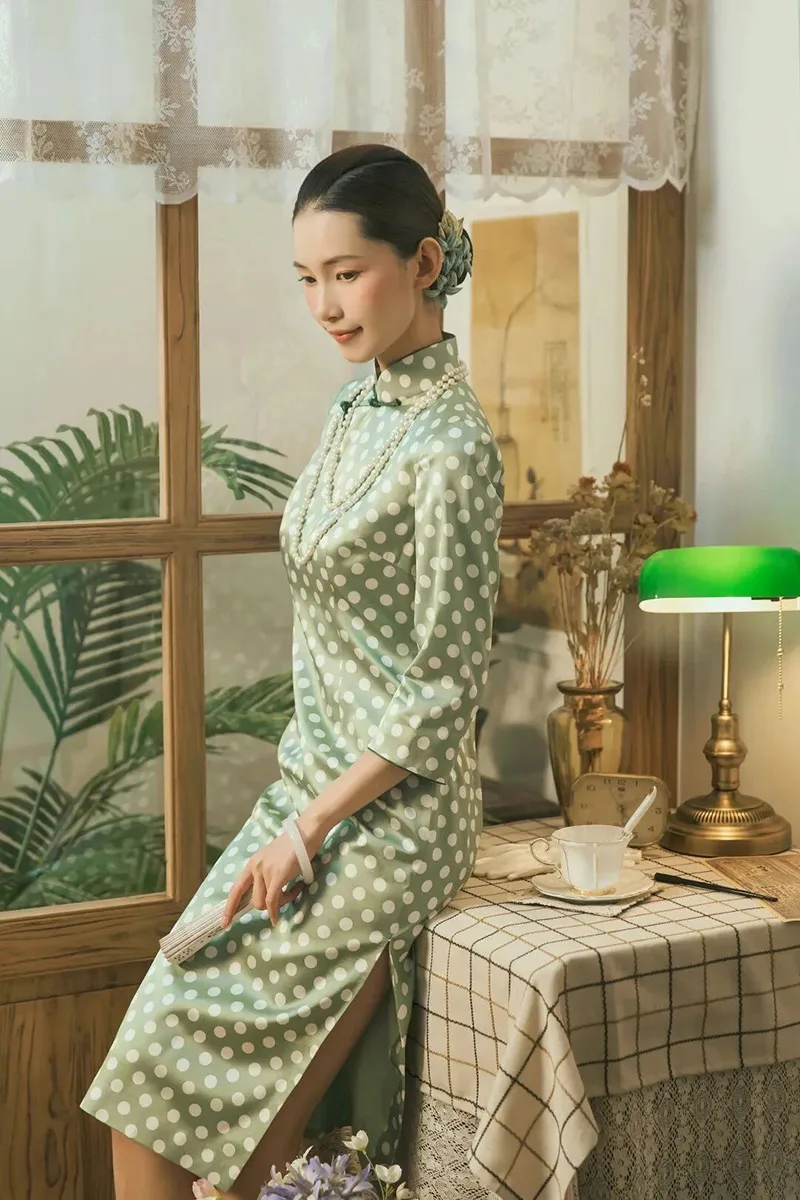
(5) Reflection of Cultural Thought in Modern Cheongsam
With the continuous changes of the times and the advancement of ideas, the modern cheongsam has evolved to meet the needs of contemporary society. While inheriting the traditional cultural essence, it also embodies the rhythm and spirit of modern culture. As Gong Hangyu stated, “In the new era, the qipao is no longer merely a convention or a heritage, but a symbol of new culture and new fashion.” We must break away from tradition while preserving cultural heritage, “using artful living to enhance modern qipao design, allowing women of the new era to wear elegance, confidence, and poise.”
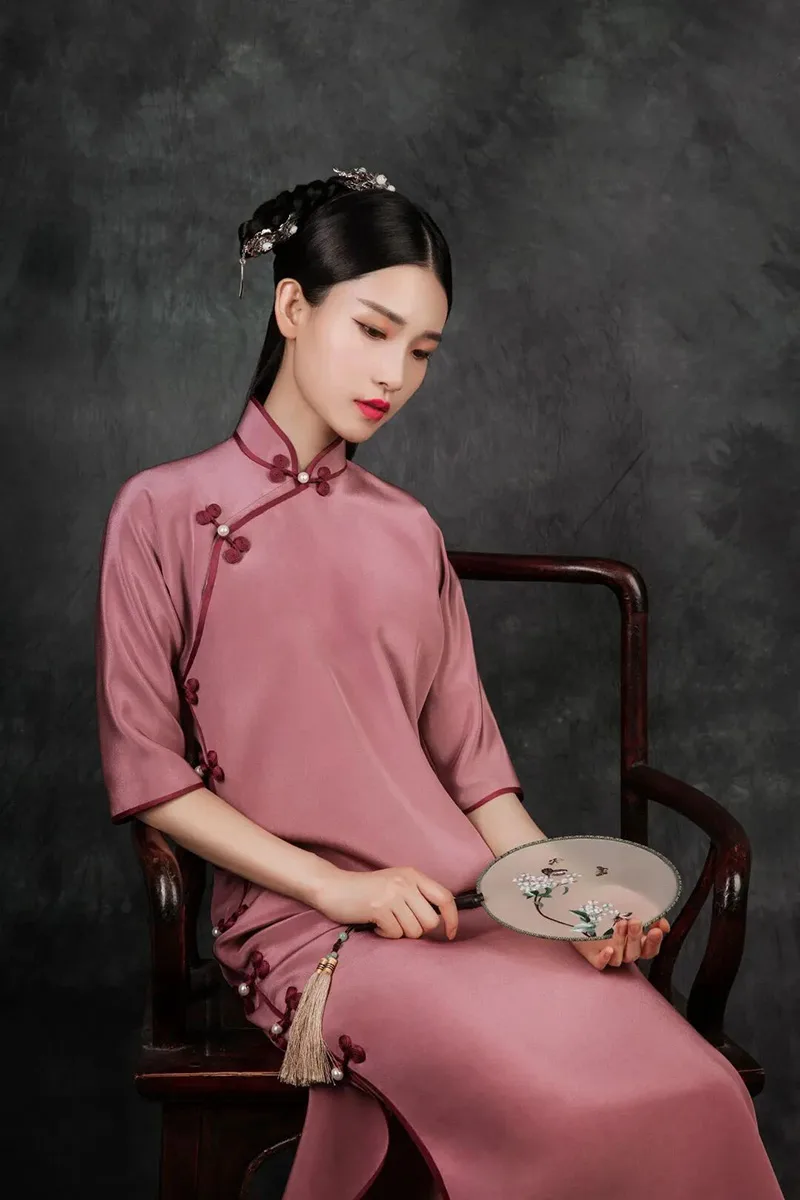
In conclusion, the modern cheongsam perfectly blends tradition with contemporary fashion. From innovative collar and sleeve designs to creative fabric choices, structural craftsmanship, and meaningful decorative details, every element reflects a thoughtful balance of elegance, comfort, and style. Beyond aesthetics, the modern cheongsam embodies cultural heritage while embracing modern ideas, allowing women to express confidence, sophistication, and individuality. As fashion continues to evolve, the modern cheongsam remains a timeless symbol of both Chinese tradition and contemporary elegance.
If you’re interested in exploring more, you can check out our full collection of modern cheongsam and find the perfect piece to match your style and occasion.
